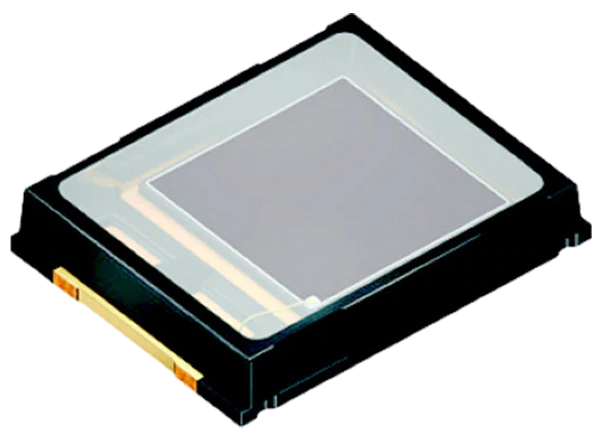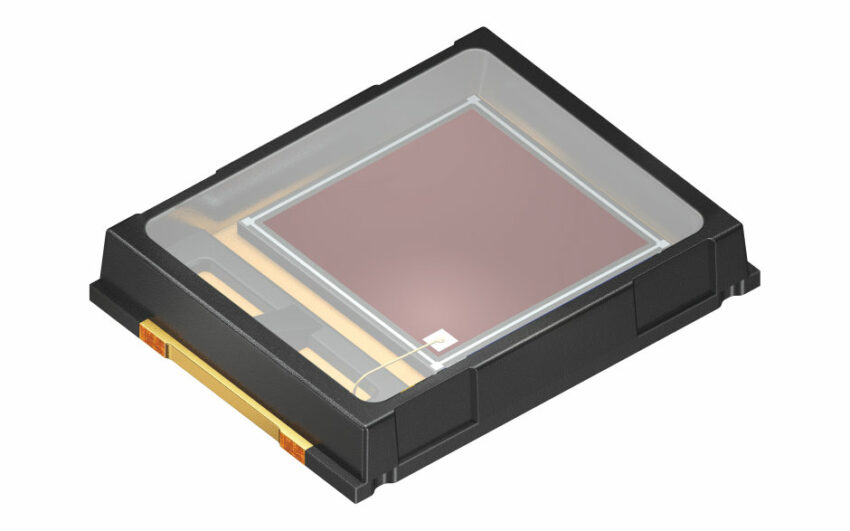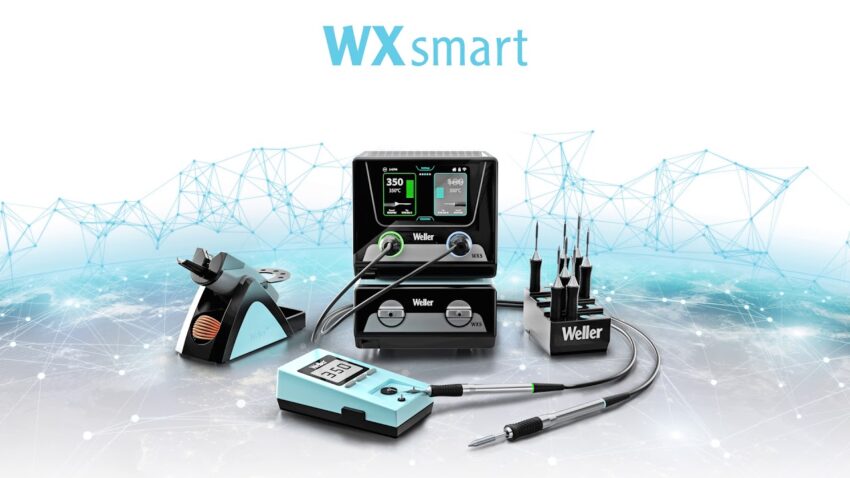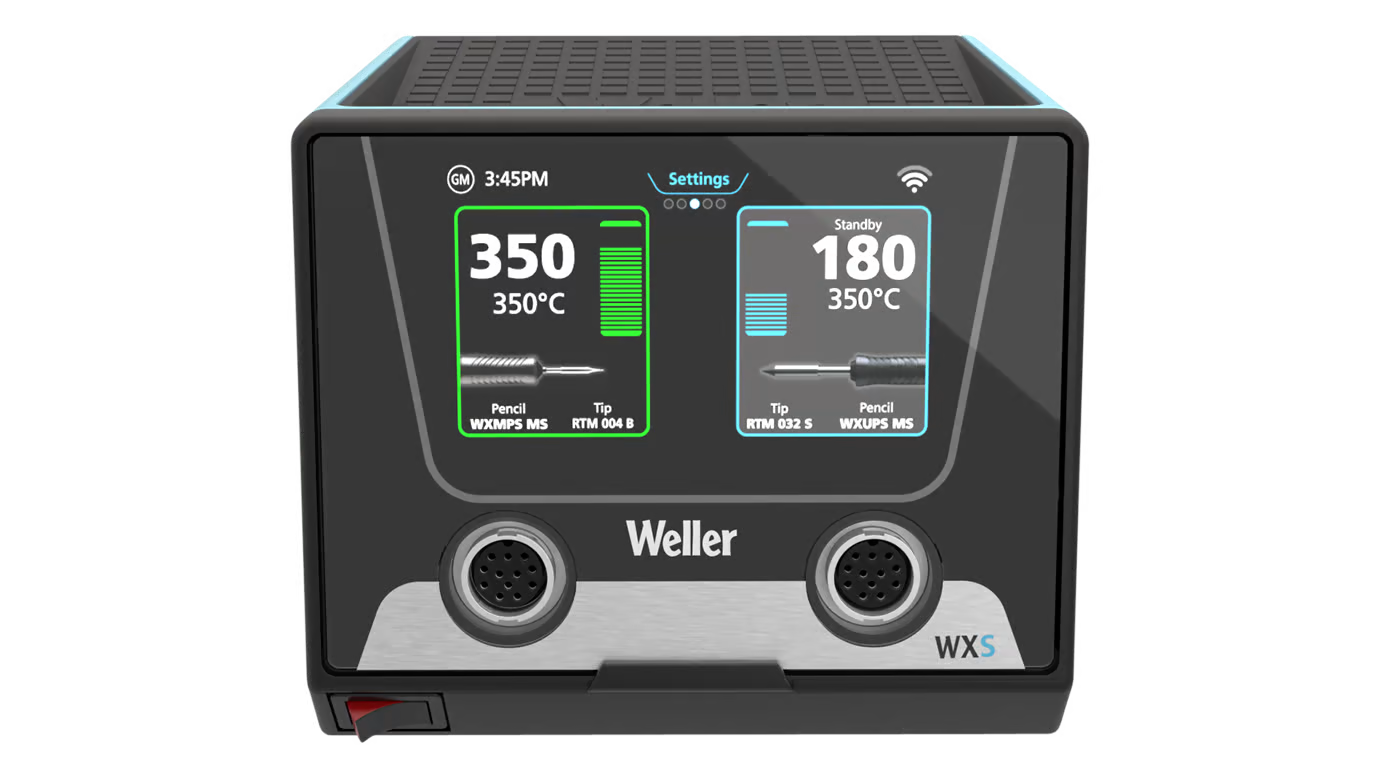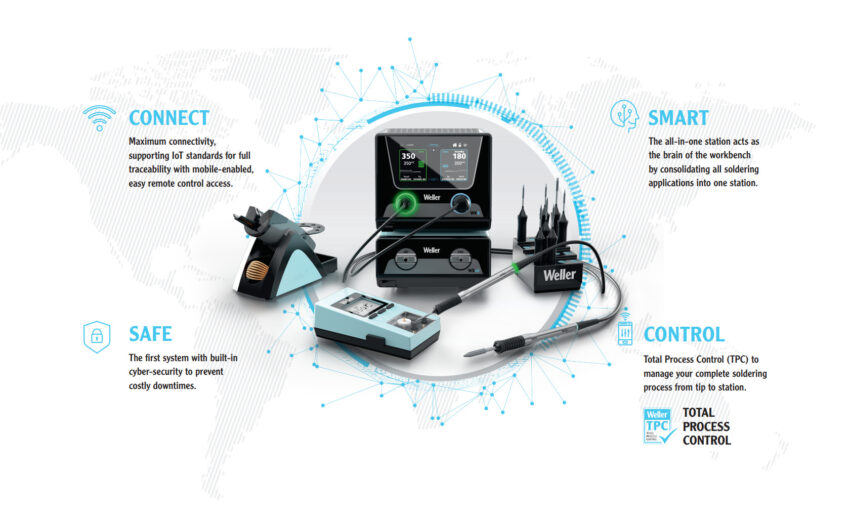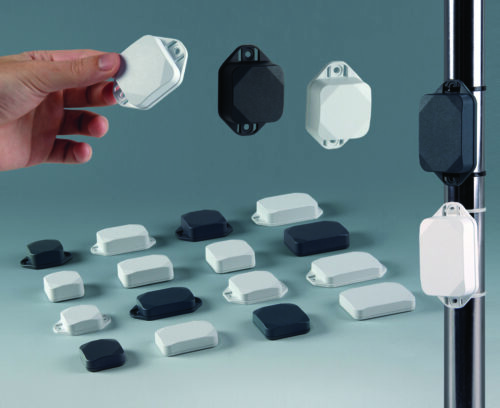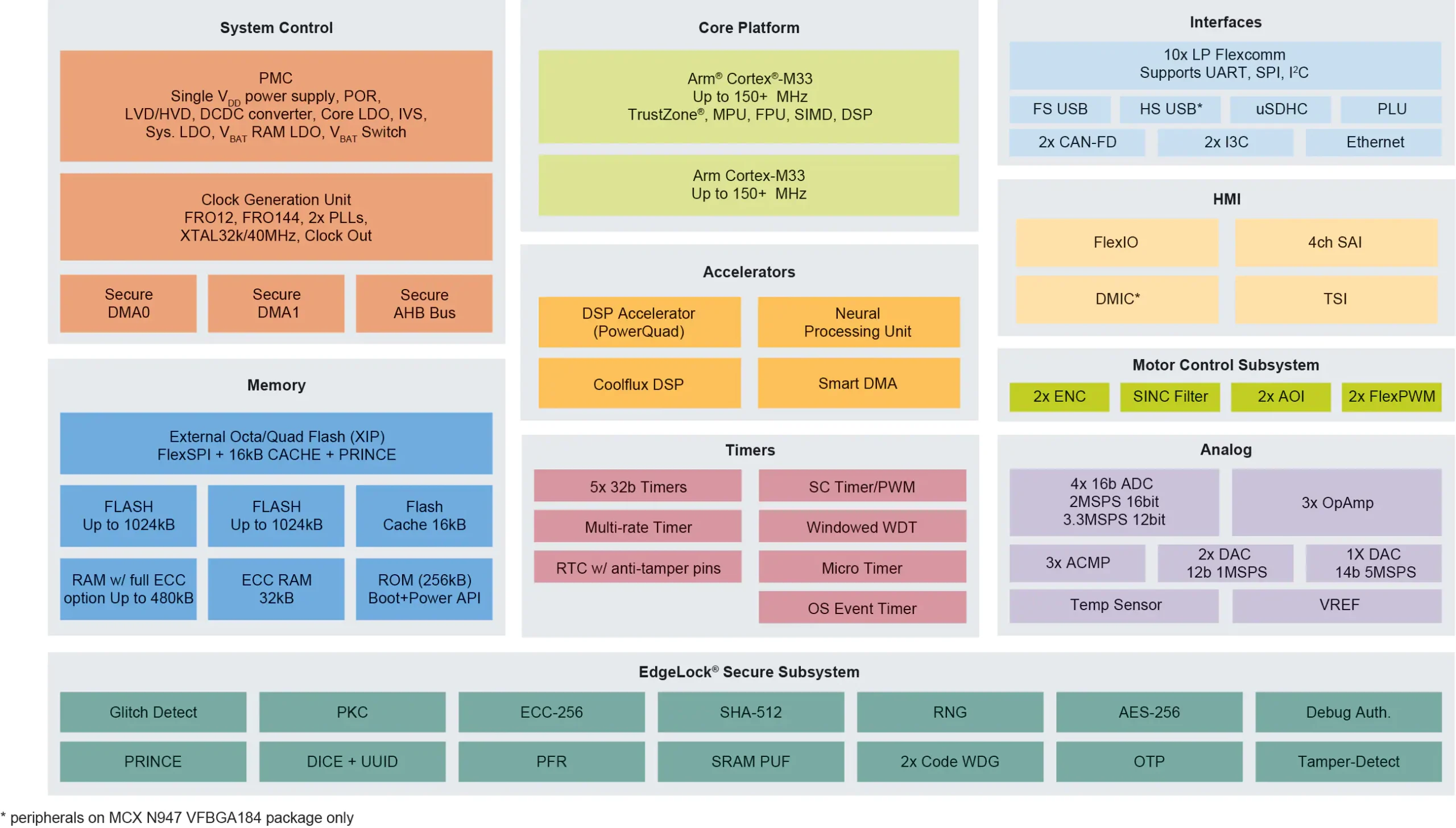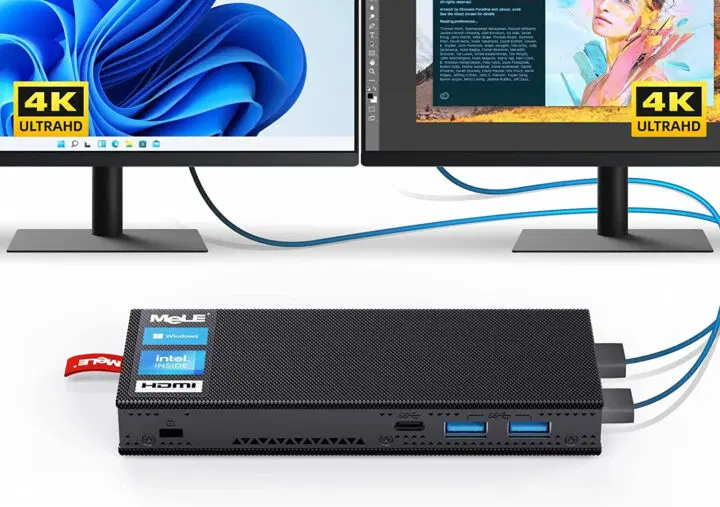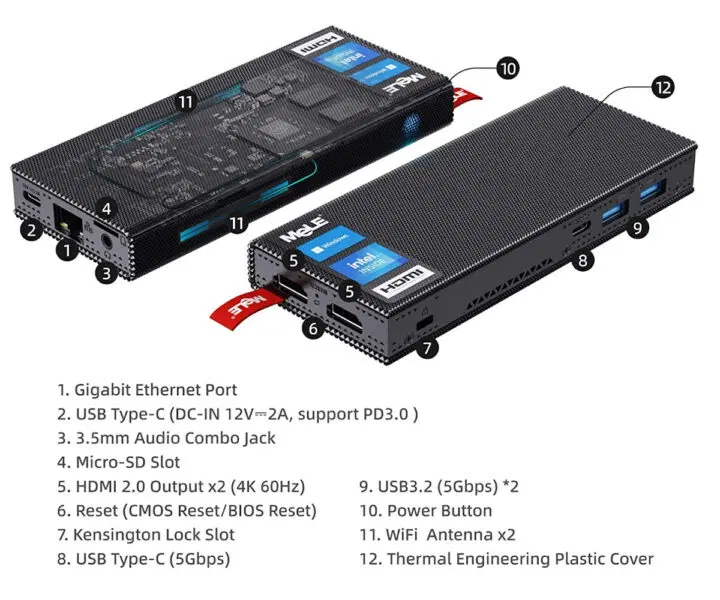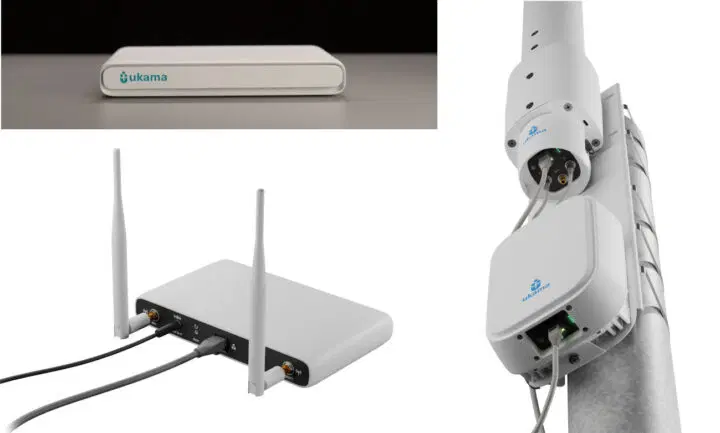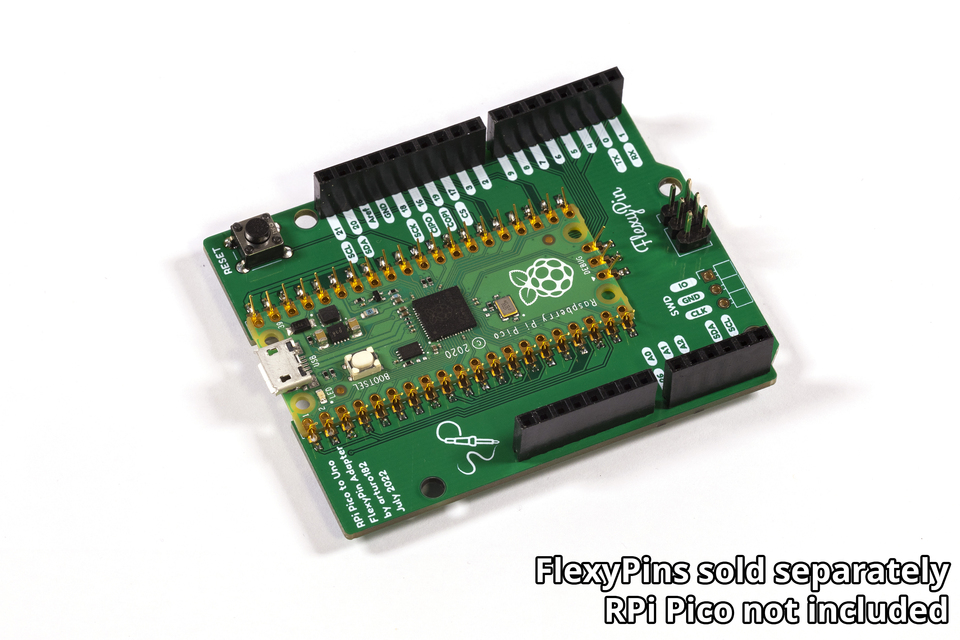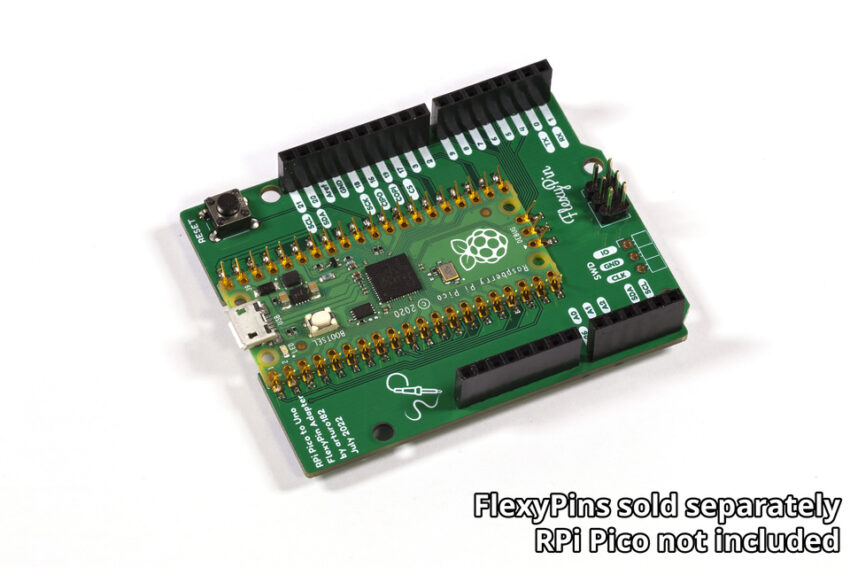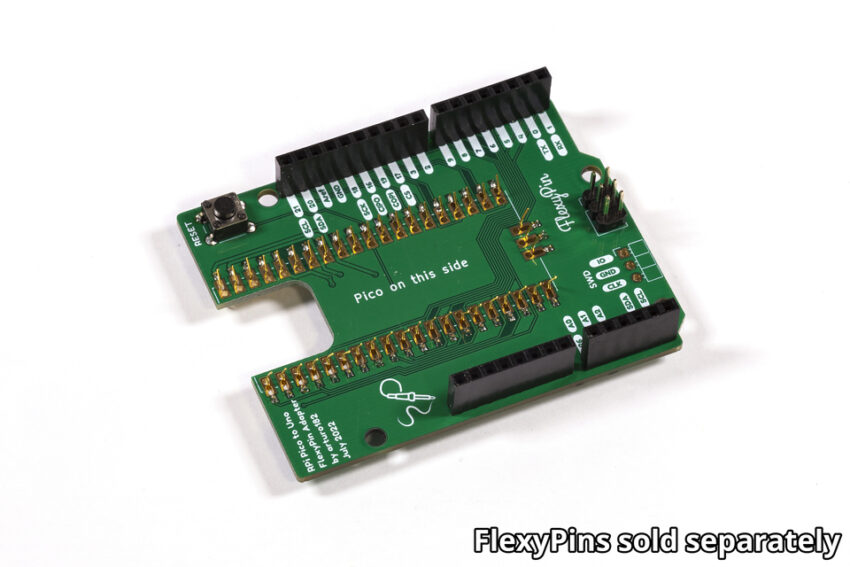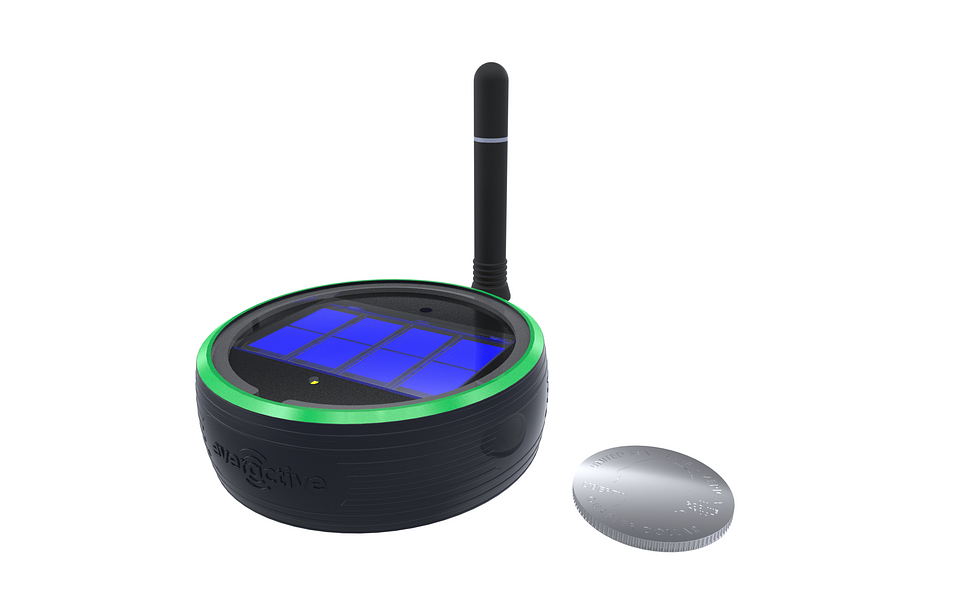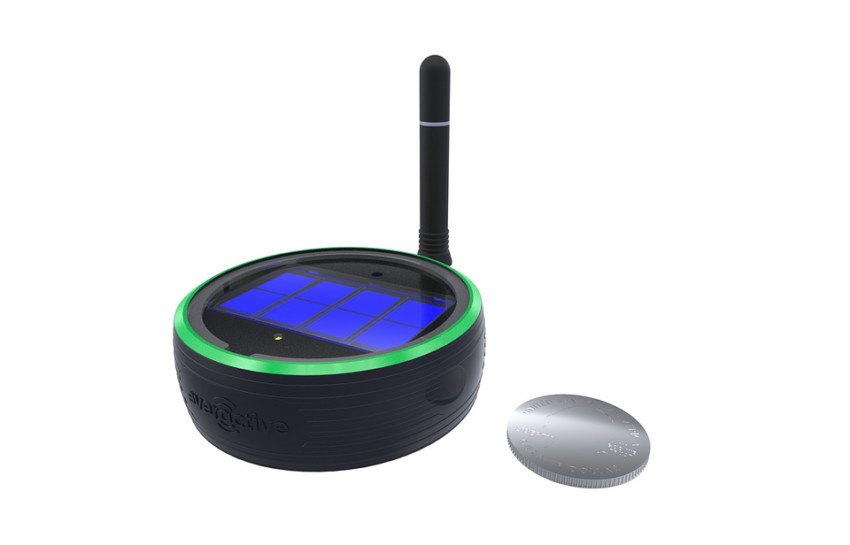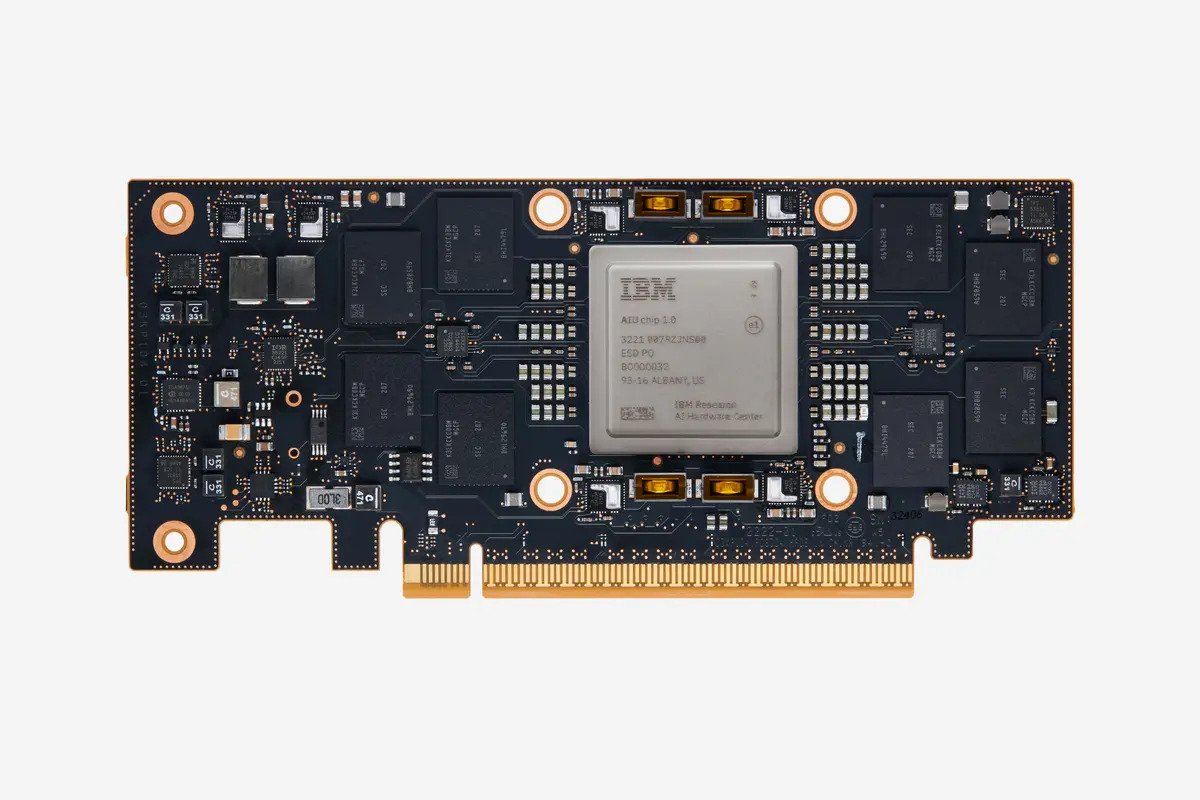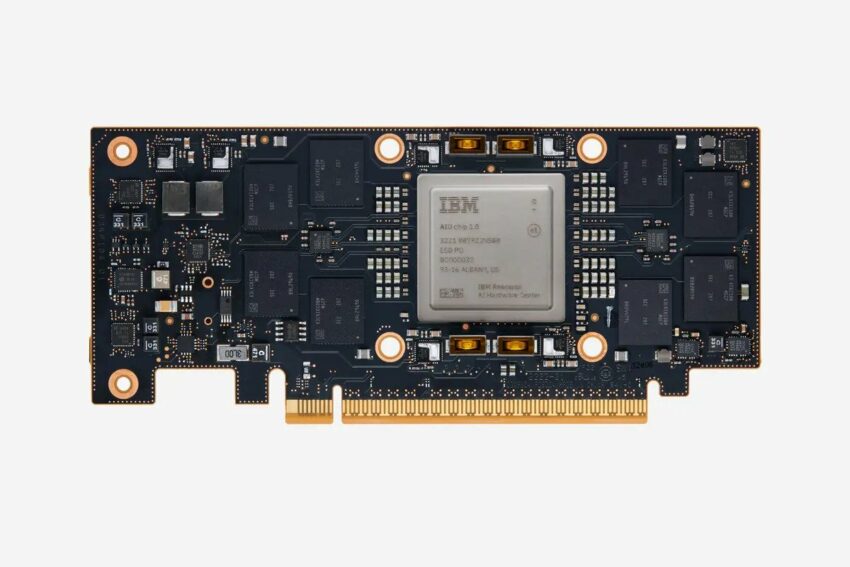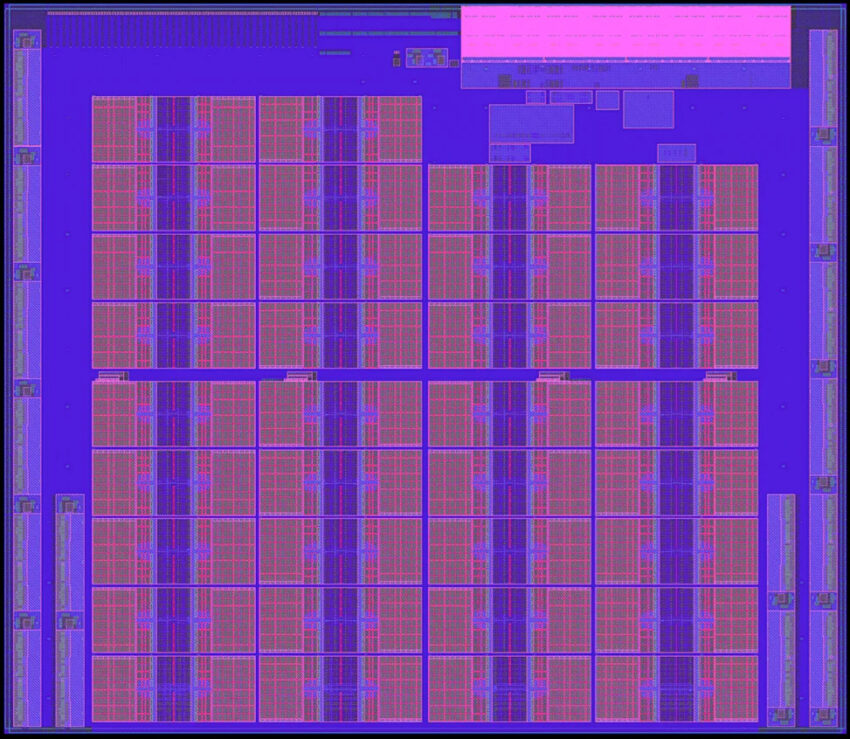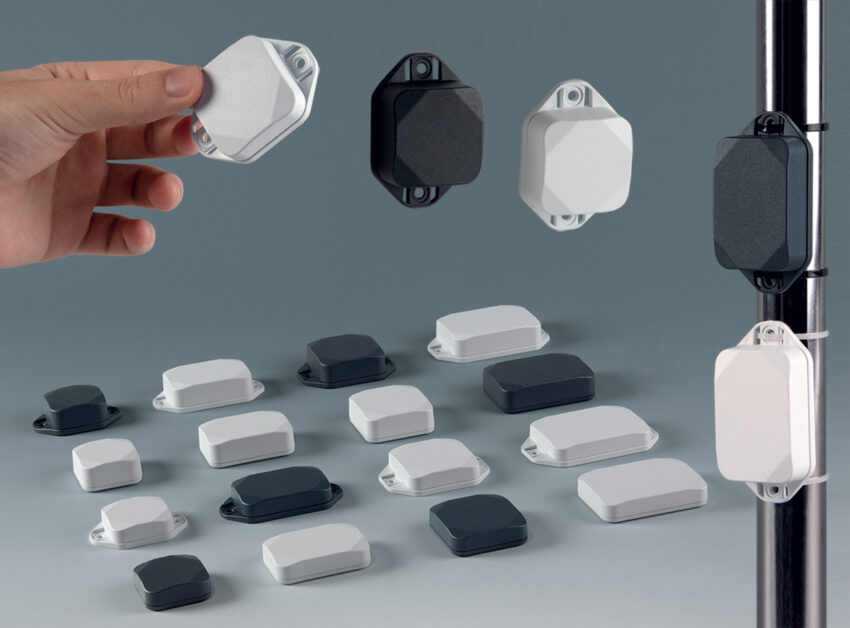
OKW’s smart new MINI-DATA-BOX is available with or without flanges for mounting the unit.
OKW has extended its wide range of sensor enclosures with the launch of tough, elegant new MINI-DATA-BOX. Its different versions, sizes, colours and optional flanges offer 32 possible permutations – all available as standard.
Innovative and compact MINI-DATA-BOX is ideal for applications including IoT/IIoT, automation, security and surveillance technology, environmental monitoring, measurement and control, smart logistics, peripherals, interfaces and ICT. Its small size also makes it suitable for wearable electronics.
MINI-DATA-BOX can be specified in two shapes: Square and Edge (rectangular), either with or without flanges for screws and cable ties, enabling fast mounting to walls, ceilings, rails and masts.
Each enclosure offers plenty of flat surfaces for interfaces. The lids have distinctive bevelled corners – a ‘diamond cut’ design which reduces weight and further enhancesthe housings’ stylish, modern aesthetics.
The lid and base feature an all-round tongue–and–groove joint for added strength. They are assembled with tamperproof Torx screws, a key requirement for medical electronics. IP 65 ingress protection is optional. Inside, there are fixing supports for PCBs and components in both the top and bottom sections. Alternatively, potting of electronic assemblies is possible.
MINI-DATA-BOX can be specified in plan sizes 40 x 40 mm, 50 x 50 mm, 40 x 60 mm and 50 x 70 mm – all of which are available in two heights (15 and 20 mm). The enclosures are moulded from UV-stable and flame-resistant ASA+PC-FR (UL 94 V-0)in a choice of two standard colours, traffic white (RAL 9016) and anthracite grey (RAL7016). Custom colours are available on request.
Accessories include seals for IP 65 ingress protection and non-slip feet for desktop use.
OKW can supply MINI-DATA-BOX fully customised. Services include CNC machining, EMC shielding, lacquering, laser marking, printing of legends and logos, and installation/assembly of accessories.
For more information, view the OKW website: https://www.okw.co.uk/en/Plastic-enclosures/Mini-Data-Box.htm
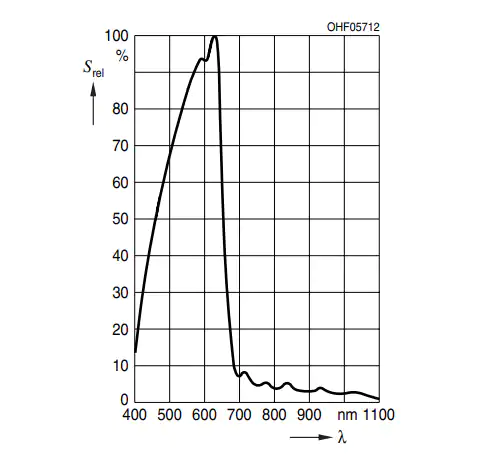 more information: https://www.osram.com/ecat/com/en/class_pim_web_catalog_103489/prd_pim_device_18386448/
more information: https://www.osram.com/ecat/com/en/class_pim_web_catalog_103489/prd_pim_device_18386448/

